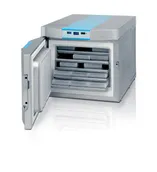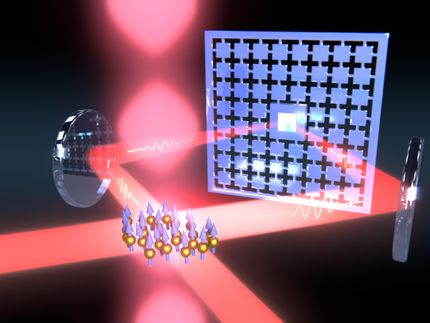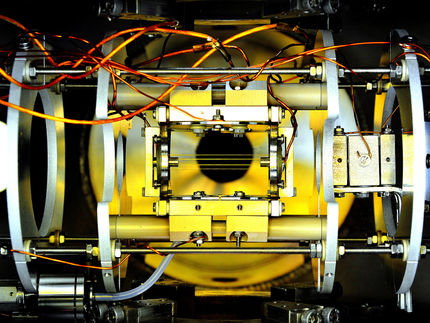Squeeze to remove heat
Elastocaloric materials enable more efficient, 'green' cooling
Move over, vapor compression cooling technology. Emerging "elastocaloric" refrigeration is potentially much more efficient and, unlike vapor compression, relies on environmentally-friendly refrigerants. In elastocaloric materials a change in mechanical stress can create a change in temperature.
In the Journal of Applied Physics, from AIP Publishing, a team of researchers from Technical University of Denmark report that the elastocaloric effect opens the door to alternative forms of solid-state refrigeration that are direct replacements for vapor compression technology.
The elastocaloric effect is one of many flavors of "caloric effects," a phenomenon in which a sudden change of an external field can alter thermodynamic properties of a solid material such as temperature or entropy, a measure of the material's disorder.
The Danish team specializes in caloric effects and is always on the lookout for new ways to build more efficient coolers. So, after years of working with magnetocaloric refrigeration system modeling and design, which involves applying a change in magnetic field to materials, they decided to also explore the potential of elastocaloric cooling.
What inspired the team's shift to elastocaloric cooling? "The large amount of latent heat released during the elastocaloric effect, as well as its potentially high power densities that can be significantly higher compared to the magnetocaloric effect," says Jaka Tušek, lead author and a postdoctoral researcher at the Technical University of Denmark.
In terms of basic underlying concepts, the elastocaloric effect is associated with the "martensitic phase transformation," which is a first-order diffusionless structural transformation from austenite to martensite phase that can be induced by reducing the temperature or by applying an external stress. This is responsible for the temperature-induced "shape memory effect" and stress-induced "superelasticity."
So, how exactly does the elastocaloric cooling cycle work? "When an elastocaloric (superelastic) material in the austenitic phase is axially stressed, an exothermic austenitic-martensitic transformation occurs," Tušek explained. "If this happens fast enough, the material heats up. It then expels heat to its surroundings and cools down to the ambient temperature." After the stress is removed, the crystal structure reverts back to its austenitic phase, which causes the material to cool down and further absorb heat from its surroundings.
The team's work is the first demonstration that shows elastocaloric materials such as a nickel-titanium (Ni-Ti) alloy can be cyclically loaded and unloaded with a reproducible elastocaloric effect over a wide temperature range.
"This is an important step toward the use of elastocaloric materials in cooling devices such as household refrigerators and air conditioners, or even heat pumps, for which the required temperature between the heat source and its heat sink is approximately 30 Kelvin or more," Tušek explained.
Tušek and colleagues also stabilized the Ni-Ti alloy to ensure a reproducible effect, which is crucial for practical applications, and created a uniform elastocaloric effect for the alloy.
Original publication
Original publication
J. Tušek, K. Engelbrecht, L.P. Mikkelsen and N. Pryds; "Elastocaloric effect of Ni-Ti wire for application in a cooling device."; Journal of Applied Physics 2015.
Organizations
Other news from the department science
These products might interest you

B 35 by FRYKA Kältetechnik
Deep freezer for arctic cold - directly on your lab bench
Your samples - ready to hand thanks to decentralized storage and safely cooled at up to - 85 °C

tritec® Chromatographic refrigerators by tritec für Labortechnik und Umweltsimulation
Energy-efficient chromatography refrigerators for precise temperature control
Safe storage of your HPLC systems at -5 °C to 20 °C with modern touchscreen display

Get the chemical industry in your inbox
By submitting this form you agree that LUMITOS AG will send you the newsletter(s) selected above by email. Your data will not be passed on to third parties. Your data will be stored and processed in accordance with our data protection regulations. LUMITOS may contact you by email for the purpose of advertising or market and opinion surveys. You can revoke your consent at any time without giving reasons to LUMITOS AG, Ernst-Augustin-Str. 2, 12489 Berlin, Germany or by e-mail at revoke@lumitos.com with effect for the future. In addition, each email contains a link to unsubscribe from the corresponding newsletter.




























































